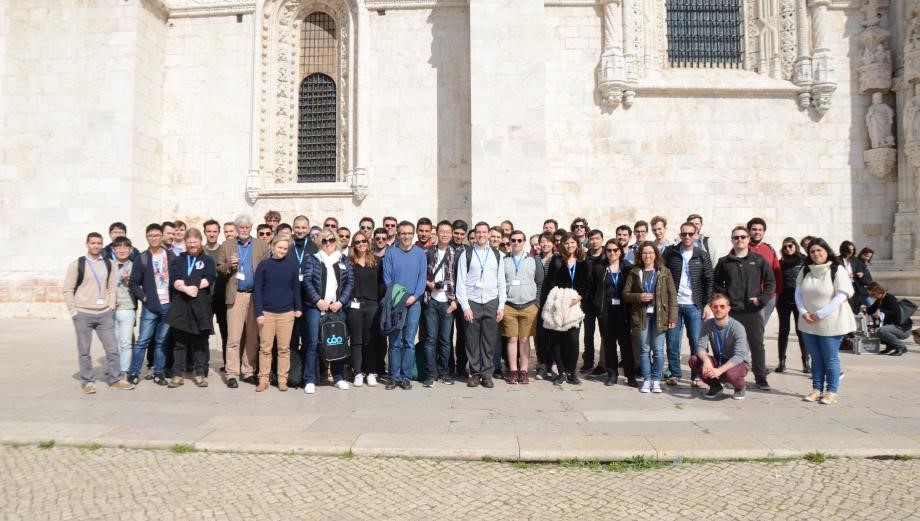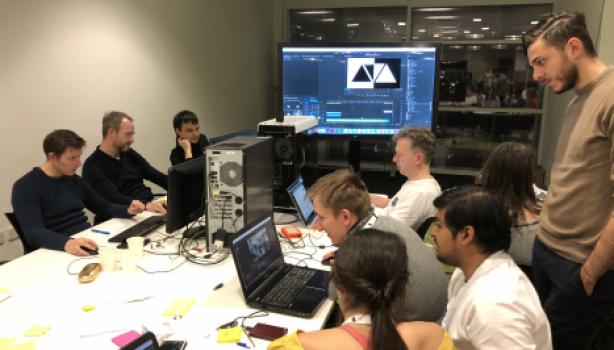A pre-requisite and necessary condition for the next step in high-energy particle acceleration is the development of new and more efficient acceleration techniques. Plasma wake fields, as well as dielectric structures, have shown very promising results in the recent past and provide acceleration gradients several orders of magnitude higher than any conventional accelerating structure. The study of these new acceleration techniques finds large interest in the community of theoretical and applied accelerator physics, and the field is very rapidly evolving, with new proposed projects with a large scope of applications being based on high gradient wake acceleration techniques.
In the context of ARIES, a European Commission co-funded project under the H2020 programme, an international school on “High Gradient Wakefield Acceleration” was organised in the Spring of 2019. “For this event, our goals were to disseminate the impressive know-how accumulated in the field over the past few years, summarise the state of the art, and provide a platform to train new students joining this field,” explains Berhard Holzer, head of the organising committee and chairperson of the event. “The school was organised under the umbrella of the CERN Accelerator School, in line with the ARIES EuroNNac3 Network’s recommendations, as well as those of an international program committee. In this way, we hoped to strengthen the collaboration between traditional accelerator physics and the new wake-based systems and bridge the gap between classical and novel acceleration techniques,” Holzer adds.
Organised in collaboration with the local host Instituto Superior Tecnico (IST) in Lisbon, this edition of the CERN Accelerator School (CAS) took form of a two-week, full-time lecture series. Following introductory lectures on plasma and laser physics, the courses covered the different components of a plasma wake accelerator and plasma-based, as well as dielectric, beam systems. Theoretical topics were covered, like the linear, non-linear and blow out regime in plasma wake physics, and they were interchanged with presentations of the experimental physics programme studied in different labs and recent results obtained in different experiments. An overview of the diagnostic tools and state-of-the-art wake acceleration facilities, both existing and planned, complemented the agenda of the School. As a special feature, typical of the CAS teaching style, several sessions were reserved for case studies.
A truly European and international event, the school welcomed 70 students from 25 different nationalities. Twenty-six lecturers from 11 countries facilitated the courses, seminar talks or acted as tutors for the more practical work, the so-called case studies, where the students were asked to apply what they had learned and to do actual design work under the leadership of experienced colleagues.

Image 1: Students and lecturers during the excursion day in Lisbon. (Image: ARIES/CAS)
The series of lectures on high gradient wake acceleration encompassed an impressive spectrum of topics currently being studied in this new field of research. Key players from many institutes came together to present – in a highly didactic manner – their field of research and to train the younger members of the community. As an integral part of the school, the organising committee has planned to present the topics covered during the School in written form, as a “CERN yellow report”. It will be an update and follow-up on the proceedings of a previous CAS on Plasma Wake Acceleration, available in printed and electronic form under the reference CERN-2016-001.
“The school represented a valuable contribution to the teaching activities within the wake acceleration community and the ARIES programme and filled a gap in training for this fast-developing field of novel acceleration techniques,” concludes Bernhard Holzer.
For more information on the CERN Accelerator School, please visit: cas.web.cern.ch/schools/sesimbra-2019


